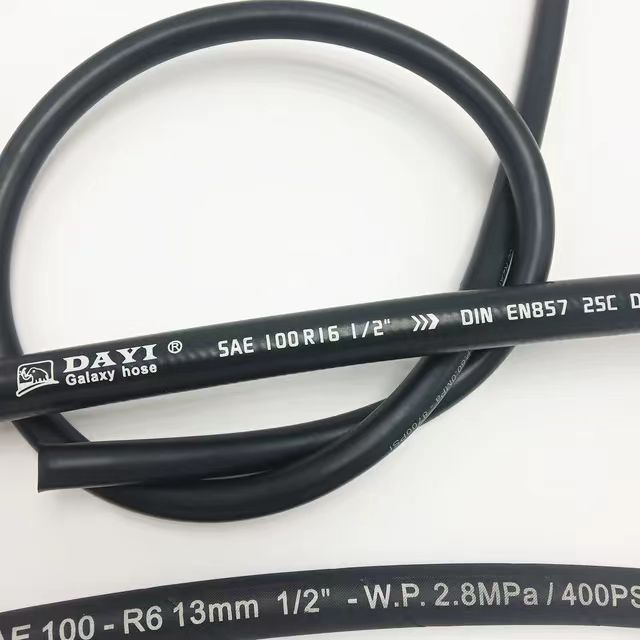335345435
Sep . 10, 2024 07:21 Back to list
High-Quality Fuel Transfer Hoses for Reliable Fuel Handling
Understanding Fuel Transfer Hoses Importance, Applications, and Selection
Fuel transfer hoses are essential components in various industries where safe and efficient transportation of fuel is necessary. These hoses are specifically designed to transfer petroleum products and other hazardous liquids, making them critical in applications ranging from automotive services to industrial fuel delivery.
Importance of Fuel Transfer Hoses
The primary function of a fuel transfer hose is to facilitate the movement of fuel from one location to another. This could include transferring fuel from storage tanks to vehicles, or from tankers to refueling stations. Given the volatile nature of fuels, these hoses must be constructed to withstand pressure, temperature fluctuations, and potential chemical interactions.
In industries like agriculture, construction, and transportation, having a reliable fuel transfer system is crucial. Downtime due to equipment failure can lead to significant financial losses and project delays. Therefore, the integrity and durability of fuel transfer hoses directly impact operational efficiency.
Applications of Fuel Transfer Hoses
Fuel transfer hoses are used in various sectors
. In the automotive industry, they are integral for fueling operations at gas stations, ensuring that vehicles are refueled efficiently and safely. In agriculture, these hoses play a critical role in delivering fuel to machinery and equipment used in farming operations. Construction sites also rely heavily on fuel transfer hoses for their heavy machinery, needing a steady supply of fuel for uninterrupted work.Additionally, fuel transfer hoses have applications in marine environments, where they are used to refuel boats and ships. In industrial settings, they are vital for processes that involve the storage and handling of hazardous materials.
fuel transfer hose

Key Considerations for Selection
When selecting a fuel transfer hose, several factors must be taken into account to ensure safety and efficiency
1. Material The hose material should be compatible with the type of fuel being transferred. Common materials include rubber, thermoplastic, and composite materials. Each has its own set of advantages regarding flexibility, temperature resistance, and chemical compatibility.
2. Pressure Rating It's crucial to choose a hose that can handle the maximum pressure of the fuel transfer process. Hoses come with varying pressure ratings, and using one that is inadequately rated can result in leaks or ruptures.
3. Temperature Resistance Since fuel transfer can involve heat generated from machinery, selecting a hose that can withstand varying temperatures is essential to prevent damage.
4. Length and Diameter The length and diameter of the hose should match the specific requirements of your application. A hose that is too long or too narrow may impede fuel flow or be cumbersome to manage.
5. Standards and Certifications Always check for compliance with industry standards and certifications, as these ensure that the hose has been tested for safety and reliability.
In conclusion, fuel transfer hoses are vital for safe and efficient fuel transportation across various sectors. Understanding their importance, applications, and selection criteria is essential for anyone involved in industries that rely on fuel transfer operations. By choosing the right hose, businesses can enhance operational efficiency and ensure the safety of their workers and the environment.
-
SAE 100 R17 Black Smooth Cover Hydraulic Hose
NewsMar.07,2025
-
SAE 100 R17 Black Smooth Cover Hydraulic Hose
NewsMar.07,2025
-
SAE 100 R17 Black Smooth Cover Hydraulic Hose
NewsMar.07,2025
-
SAE 100 R17 Black Smooth Cover Hydraulic Hose
NewsMar.07,2025
-
SAE 100 R17 Black Smooth Cover Hydraulic Hose
NewsMar.07,2025
-
steel wire braided hydraulic hose
NewsMar.07,2025



